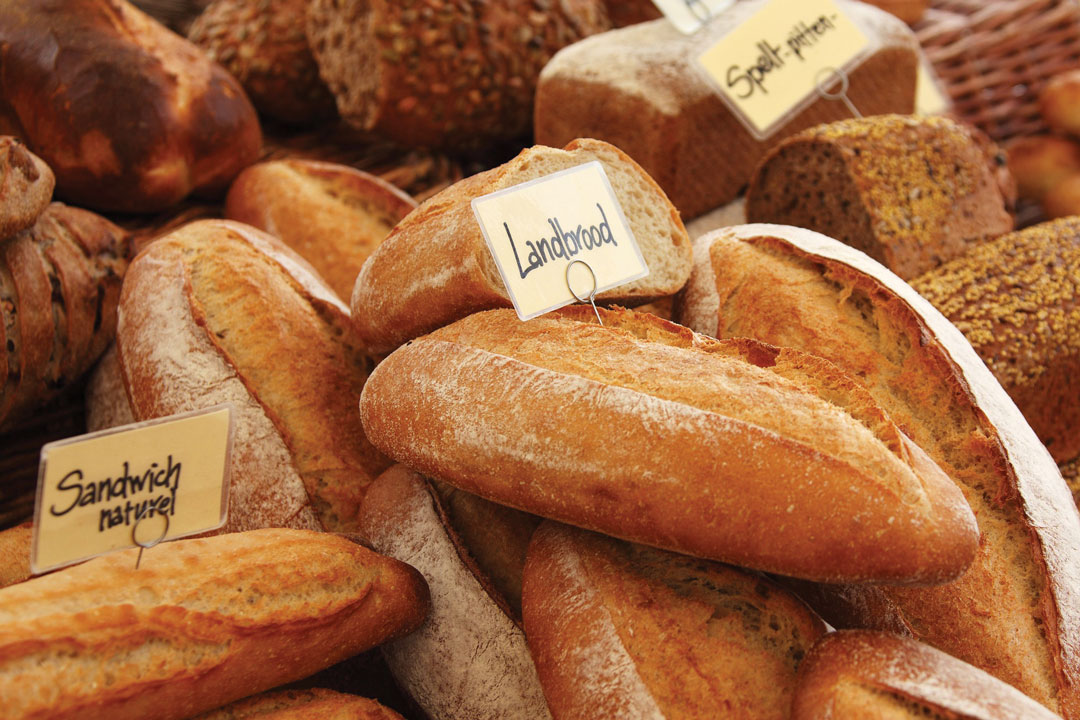NOT JUST A RAW COMMODITY
BY GEOFF GEDDES • PHOTO PIXABAY
How best to approach value-added opportunities in the agri-food sector is a tricky question.
“I first heard the term ‘value-added’ in the late ’70s from Grant Devine, a professor at the University of Saskatchewan, who would go on to be premier of Saskatchewan in 1982,” said Tom Steve, general manager of the Alberta Wheat Commission. “He couldn’t see the logic in shipping our raw products to markets and letting them realize the processing opportunities. Others referred to western Canadian farmers as ‘hewers of wood and drawers of water,’ producing bulk grain cheaply while all the processing jobs went to Ontario or overseas.’”
Successive Alberta governments have pursued the expansion of the value-added sector yet failed to achieve their objectives. Now that the current government looks to bounce back from COVID-19 with the Alberta Recovery Plan, it hopes to give valued-added agriculture a boost in the process.
READY, AIM, INVEST
“We are aiming to attract $1.4 billion in private sector investment in the value-added sector over the next two years, while adding 2,000 new jobs,” said Devin Dreeshen, Alberta minister of agriculture and forestry. “That will include everything from canola crushing and fertilizer plants to new grain mills and malting companies. This past summer we announced an $815 million investment in irrigation that will net 200,000 new acres of irrigated land. So many value-added commodities need irrigated land to grow specialty crops such as sugar and potatoes.”
The government plans to support these efforts by streamlining the regulatory approval process, keeping taxes low and adding agricultural trade offices in Singapore, Mexico City, and parts of the EU and U.S.
There are additional signs of promise in this area. A recent report by Farm Credit Canada (FCC) outlined significant growth opportunities for Canadian value-added agri-food exports.
“In spite of an initial slowdown due to the pandemic, cereals have rebounded well with strong demand globally,” said J.P. Gervais, VP of ag economics and valuations and chief economist for FCC. “As far as domestic processing, we’ve seen growth in recent years with grain and oilseeds, while bread and bakery has grown more than any other food processing sector. More than 90 per cent of our bread and bakery exports are to the U.S.,and I’m optimistic we can continue to develop that part ofthe market.”
To maximize its value-added opportunities, Canada will have to overcome challenges such as non-tariff trade barriers and failure by certain nations to recognize the country’s inspection processes. Canada may also need to temper its quintessential trait: politeness.
HORN-BLOWING TIME
“We have done quite a bit as far as trade presence, such as international trade missions, but we are not seen as aggressive marketers compared to the United States,” said Gervais. “We have a ton of advantages such as abundant natural resources, a good record on food safety and a stellar reputation in the marketplace. We just need to get past the barriers and not be afraid to advertise our assets.”
These assets are vital to attract investment in Alberta’s value-added agriculture. “Alberta has a massive brain trust with regards to agriculture, which leads to innovation and new products,” said David Knight Legg, CEO of Invest Alberta. “Having this depth of knowledge and entrepreneurial spirit drives greater investment and the opportunity for much more globalized partnerships. As well, one of the primary drivers of value-added investment is a consistent supply of quality products. This is key, as it allows investors to build a long-term, viable plan around their investment or business.”
If all of this has cereal farmers asking what’s in it for them, the answer is encouraging: plenty. “When we consider the current global demand for plant-based protein, wheat gluten is the second largest source of protein, second only to soy,” said Bill Greuel, CEO of Protein Industries Canada. “Additionally, oat protein offers some unique functional properties and has low allergenicity. Given that, along with the volume and quality of cereals we produce, they have huge upside potential from a processing perspective in the Prairies, including Alberta.”
The fundamentals that support investment in processing Prairie-grown canola, pulses and hemp are also true for cereals.

“One of the fastest growing food developments is oat milk,” said Greuel. “I think that’s one example that is relatable to consumers, yet wheat and other cereal crops also have a lot of potential in the ingredient space. Protein Industries Canada recently invested in a project in Saskatchewan to create new types of oat milk, using oats grown on the Prairies. That company currently has an agreement with a major retailer, and it is expected that the product will be on store shelves sometime in 2021.”
While the potential in the value-added sphere is abundant, some say we should approach it with an abundance of caution. “All too often, governments have pursued value-added processing without connecting the dots with market demand,” said Steve. “The thinking has been ‘we have this raw product that we will add value to, and worry about the logistics and markets later.’”
If Alberta intends to capitalize on the opportunities in value-added processing, it may be prudent to poll the market and ensure we are meeting consumer demands. “We have had some success stories such as Rahr Malting in Alix and Canada Malting in Calgary, but is there demand for a third malt plant in Alberta?” said Steve. “Do we need another canola crushing plant or additional flour milling capacity?”
Observers such as Steve feel governments need to understand a basic truth: the market will answer these questions. “A demand for crushed canola precipitated the development of our current canola crushing capacity in Western Canada,” said Steve. “We didn’t need a government subsidy or a lot of over-analysis to make that decision. If the market demand is there, the private sector will respond. “The sheer volume of crops we grow on the Prairies continues to outstrip our ability to move it, so there will be opportunities. Due to the size of our production base, however, there must be hundreds of thousands of tonnes in demand for us to succeed in value-added processing. This is often forgotten in a lot of valued-added initiatives, that small volumes won’t make much difference at the farm gate and in the end that’s what it’s all about.”







Comments